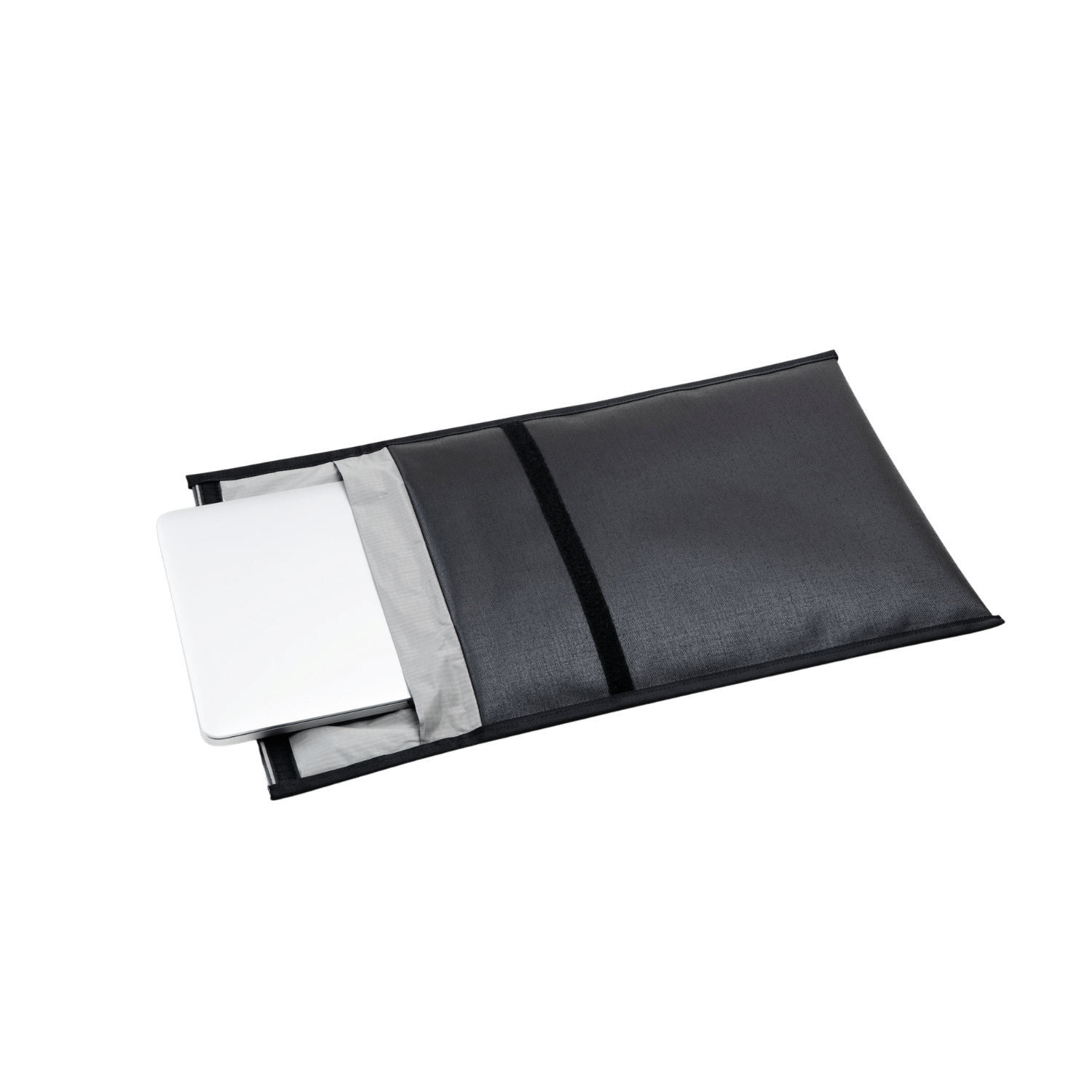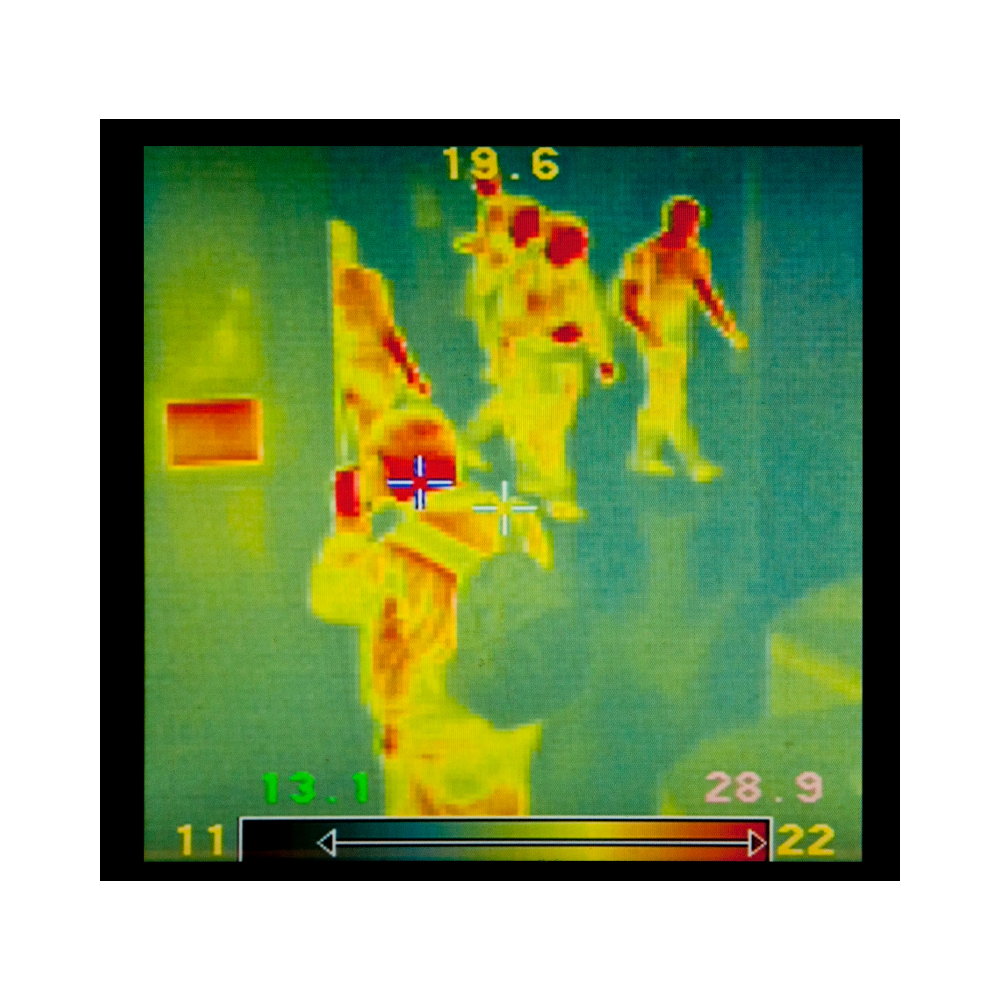Military and Defense: Shielding Solutions in the Age of Cyber Attacks and Hybrid Threats
Shieldex offers a range of shielding solutions specifically designed for military applications. These solutions protect communications and reduce visibility to enemy sensors, which is critical for military operations.

Textile Abschirmung
Shieldex ist spezialisiert auf innovative textile Abschirmtechnologien, die Schutz vor elektromagnetischen Störungen und Infraroterkennung bieten. Unsere flexiblen und leichten Materialien reduzieren sowohl die thermische als auch
elektromagnetische Signatur von Uniformen, Fahrzeugen und Ausrüstung, was eine optimale Tarnung und Datensicherheit ermöglicht – selbst in herausfordernden Umgebungen.

Shielding in the Military: A Necessity
In today's digital world, military operations rely heavily on technology and communications. The ability to communicate and transmit information securely is critical. Electromagnetic interference can disrupt these communications and reduce the effectiveness of military operations. Therefore, shielding communication systems and sensitive devices from electromagnetic interference is crucial.

Shieldex shielding bags
The Shieldex shielding bags are an effective solution for shielding small electronic devices. They offer professional protection against data misuse and data backup in the field of mobile forensics with a shielding performance of 80 dB in the frequency range 0.9 to 3.8 GHz. The shielding bags are available in different sizes and designs for laptops, tablets and cell phones and are made of a tightly woven polyamide, while the inside is made of two different metallized Shieldex fabrics.
State-of-the-art infrared shielding: a decisive advantage
Another crucial aspect that makes Shieldex an indispensable partner in military defense is its ability to shield infrared rays. Infrared radiation is a form of electromagnetic radiation used in many military applications, particularly surveillance and reconnaissance. Enemy forces can use infrared sensors to detect heat sources, allowing them to track vehicles, aircraft and even individual soldiers.
Shieldex products can effectively shield this infrared radiation, significantly reducing visibility to enemy sensors. This can provide a decisive advantage by significantly limiting the enemy's ability to gather accurate information about the position and movements of one's own troops. In addition, shielding infrared radiation can also help reduce the effectiveness of thermal imaging cameras and other infrared detection systems, further increasing the safety and effectiveness of military operations.

Schutz vor Infraroterkennung und Wärmestrahlung
Infrarotsensoren und Wärmebildsysteme gehören zu den größten Bedrohungen im modernen Kriegsumfeld. Shieldex bietet eine wirkungsvolle Lösung durch den Einsatz metallisierter Textilien, die Wärmestrahlung im Spektrum von 780nm bis 20.000nm reflektieren.
Diese Technologie findet in Uniformen, Spezialanzügen,
Schutzdecken und Fahrzeugabdeckungen Anwendung und minimiert die Erkennung
durch Infrarotsysteme des Gegners.
Flächenware zur Abschirmung der Infrarotsignatur:
-

Shieldex® Zell RS CR
Zum Muster-ShopDieses hochleitfähige Gewebe ist mit Silber, Kupfer und Zinn beschichtet und weist einen elektrischen Oberflächenwiderstand von 0,02 Ω/□ auf.
-
Abschirmung
vor elektromagnetischer Strahlung
(EMI / RFI Abschirmung)
Im Bereich der elektromagnetischen Strahlung (EMI) und Hochfrequenzstörungen (RFI) bietet Shieldex effektive Lösungen, um sensible Kommunikationssysteme und elektronische Geräte vor Abhörversuchen oder Störsignalen zu schützen. Unsere Abschirmmaterialien, darunter Nora Dell und Zell RS, verhindern die Ausbreitung von elektromagnetischen Wellen und sorgen für einen sicheren
Betrieb von Kommandozentralen und Kommunikationsnetzwerken.
Flächenware zur EMI/RFI Abschirmung:
-

Shieldex® Nora Dell
Nora Dell im Muster-ShopDank der mehrschichtigen Metallbeschichtung bietet das Textil eine Abschirmwirkung von bis zu 56 dB im Frequenzbereich von 26-40 GHz.
-

Shieldex® Berlin RS
Berlin RS im Muster-ShopBerlin RS ist ein vielseitiger Allrounder für technische Produkte und elektromagnetische Abschirmung. Mit einer Abschirmleistung von 60 dB im Frequenzbereich von 0,2 bis 14 GHz
-

Shieldex® Zell RS CR
Zell RS CR im Muster-ShopDas robuste Ripstop-Gewebe von Shieldex® Zell RS CR mit 2.500 Fäden pro cm² wird in der Industrie für technische Anwendungen mit hoher Belastung genutzt. Zudem findet es Einsatz in der textilen Kabel- und Raumabschirmung sowie in mobilen Abschirmzelten.
-

Shieldex® Pisa RS
Pisa RS im Muster-ShopBietet eine Abschirmleistung von 88 dB bis zu 26 GHz. Dank der Nickel-Beschichtung besitzt es eine hervorragende Leitfähigkeit und wird aufgrund seiner starken Abschirmwirkung gegen elektromagnetische Strahlung in EMV-Zelten verwendet.
Maßgeschneiderte Lösungen
Individuellangepasste Lösungen und technischer Support
Umspezifische militärische Anforderungen zu erfüllen, bietet Shieldex
maßgeschneiderte Abschirmlösungen, die auf die besonderen Einsatzbedingungen
abgestimmt sind. Unser Service umfasst nicht nur die Lieferung der Produkte,
sondern auch die Anpassung und den technischen Support, um eine langfristige
Effizienz und Zuverlässigkeit sicherzustellen.
Leichteund flexible Lösungen für mobile Einsätze
Für militärische Operationen, bei denen Mobilität und Tarnung entscheidend sind,
entwickelt Shieldex hochmoderne Abschirmstoffe, die leicht und dennoch robust
sind. Diese Textilien können vielseitig eingesetzt werden, von der persönlichen
Ausrüstung bis hin zu Fahrzeugtarnung, und gewährleisten gleichzeitig einen
umfassenden Schutz vor elektromagnetischen und infrarotbasierten Bedrohungen.





